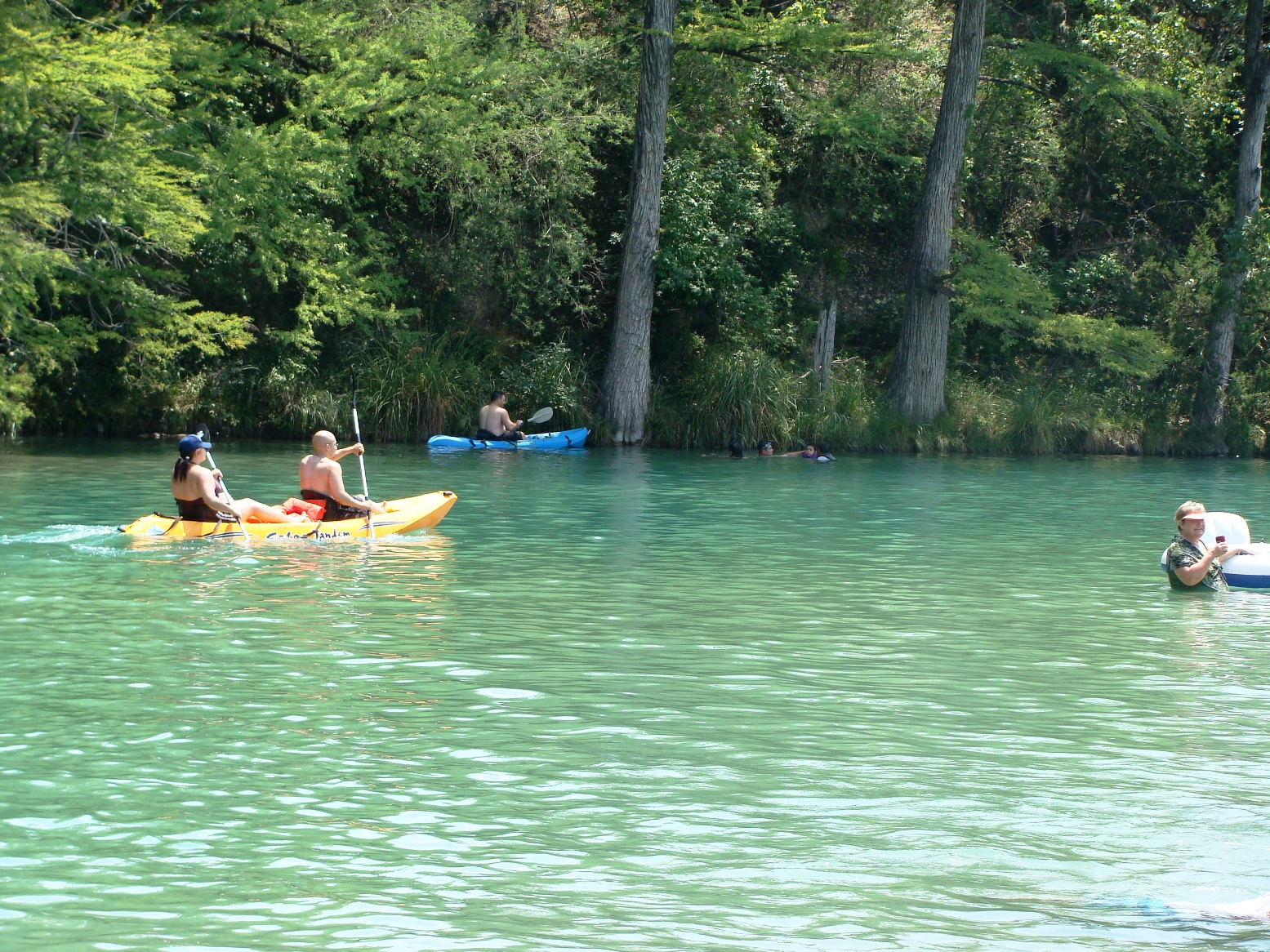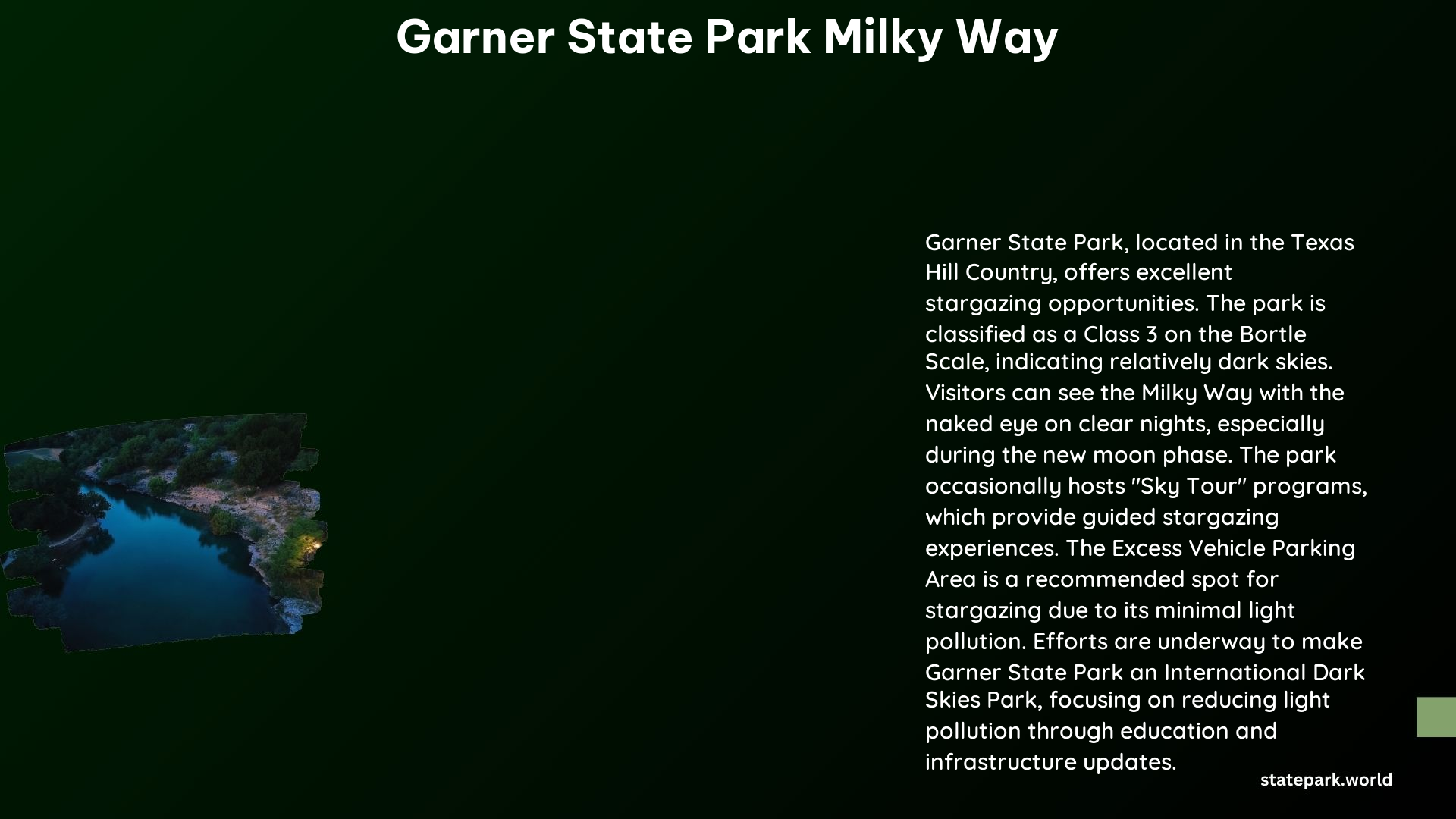Garner State Park is a prime destination for stargazers and astronomy enthusiasts, offering exceptional opportunities to witness the breathtaking Milky Way. Located in the heart of the Texas Hill Country, this park boasts some of the darkest skies in the region, making it an ideal spot to immerse yourself in the celestial wonders of the night sky.
What is the best time to view the Milky Way at Garner State Park?

The best time to view the Milky Way at Garner State Park is during the new moon phase, when the sky is at its darkest. This typically occurs every 29.5 days, and the park often hosts stargazing programs and star parties around this time, providing an optimal viewing experience.
What can you see in the Milky Way at Garner State Park?

From Garner State Park, you can witness the Milky Way stretching from the constellation Cassiopeia in the northeast to the constellation Scorpius in the south. With the naked eye, you can marvel at the stunning band of stars and celestial objects that make up our galaxy. However, with the aid of binoculars, you can spot even more celestial wonders.
What can you see with binoculars near the southern horizon at Garner State Park?
Using binoculars, you can observe several fascinating celestial objects near the southern horizon at Garner State Park. These include the Butterfly Cluster (M6), the Ptolemy Cluster (M7), and the Baby Scorpion (NGC 6231). These deep-sky objects are best viewed from the Excess Vehicle Parking Area, which offers a clear and unobstructed view of the southern sky.
How is Garner State Park working towards becoming an International Dark Skies Park?
Garner State Park is actively working towards becoming an International Dark Skies Park, a prestigious designation awarded to locations that have exceptional quality of starry nights and a commitment to preserving the nocturnal environment. The park encourages visitors to support this initiative by adopting responsible lighting practices, such as using warm-colored LED lights and minimizing light pollution. This effort aims to preserve the park’s dark skies and enhance the overall stargazing experience for visitors.
What are some tips for stargazing at Garner State Park?
To make the most of your stargazing experience at Garner State Park, consider the following tips:
- New Moon: Plan your visit during the new moon phase for the best viewing conditions.
- Dark Skies: Seek out areas with minimal light pollution and obstructions to enjoy the full splendor of the night sky.
- Binoculars: Bring a pair of binoculars to enhance your viewing experience and explore the celestial objects near the southern horizon.
- Star Charts: Use star charts or mobile apps to help identify constellations and other celestial features.
- Stargazing Programs: Participate in the park’s stargazing programs and star parties to benefit from guided viewing experiences and connect with other astronomy enthusiasts.
Additional Resources
To further enhance your stargazing adventure at Garner State Park, consider the following resources:
- Light Pollution Map: Check the Light Pollution Atlas to identify the darkest areas near the park and plan your visit accordingly.
- Stargazing Events: Stay informed about upcoming stargazing events and programs at Garner State Park and other Texas state parks by visiting the Texas Parks and Wildlife Department’s website.
- Star Parties: Connect with local astronomy clubs and attend star parties at the park to share your passion for the night sky with like-minded individuals.
Garner State Park’s exceptional dark skies and diverse celestial offerings make it a true haven for stargazers and astronomy enthusiasts. Whether you’re a seasoned stargazer or a curious beginner, this park offers an unforgettable opportunity to immerse yourself in the wonders of the Milky Way and the vast expanse of the night sky.
References
- Friends of Garner State Park. (2024). Dark Skies. Retrieved from https://friendsofgarner.org/dark-skies
- Texas Parks and Wildlife Department. (n.d.). Stargazing in Texas State Parks. Retrieved from https://tpwd.texas.gov/state-parks/parks/things-to-do/stargazing-in-state-parks/
- ClearDarkSky. (2024). Garner State Park Light Pollution Map. Retrieved from http://www.cleardarksky.com/lp/GrnrSPTXlp.html?Mn=astrophotography
- Mosquera, C. (2023). Milky Way at Garner State Park. Retrieved from https://www.flickr.com/photos/199320345%40N06/53261369292/
- Reddit. (2022). Where in Texas can you see the Milky Way? Retrieved from https://www.reddit.com/r/plano/comments/w1bu7c/where_in_texas_can_you_see_the_milkyway/.
